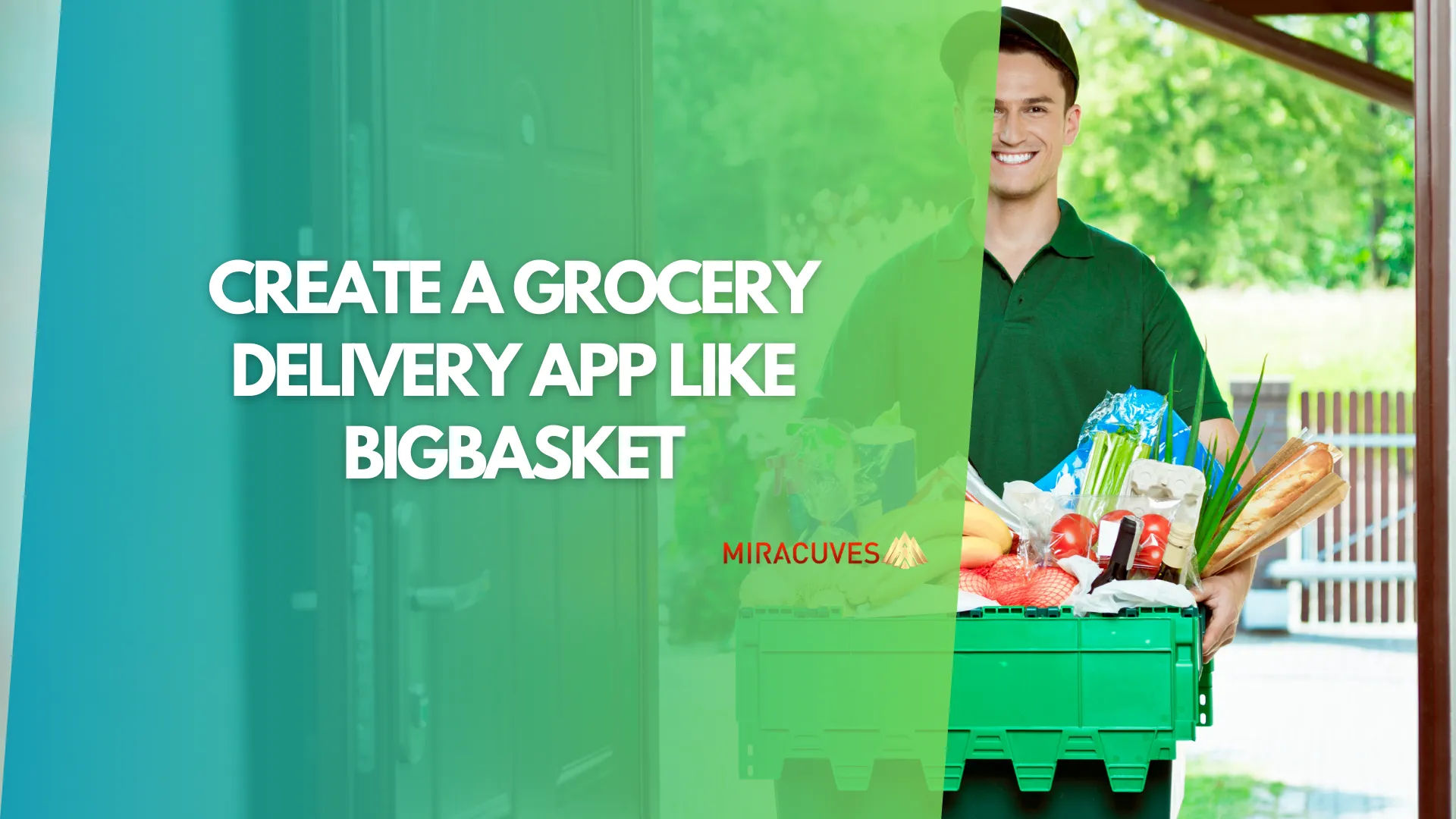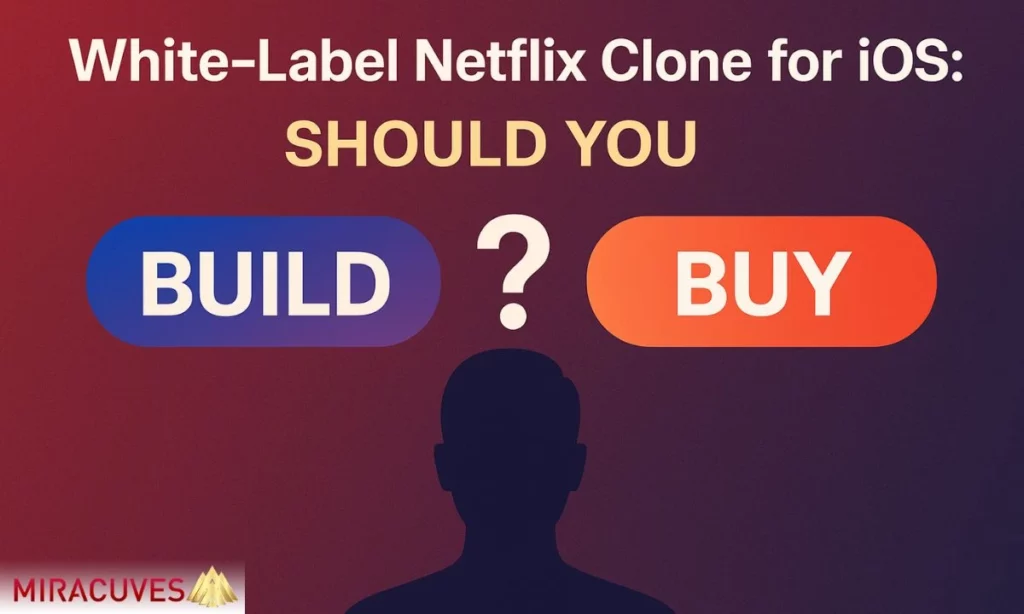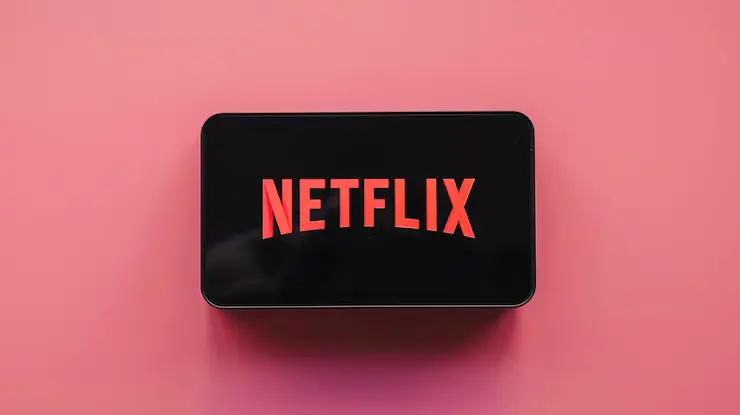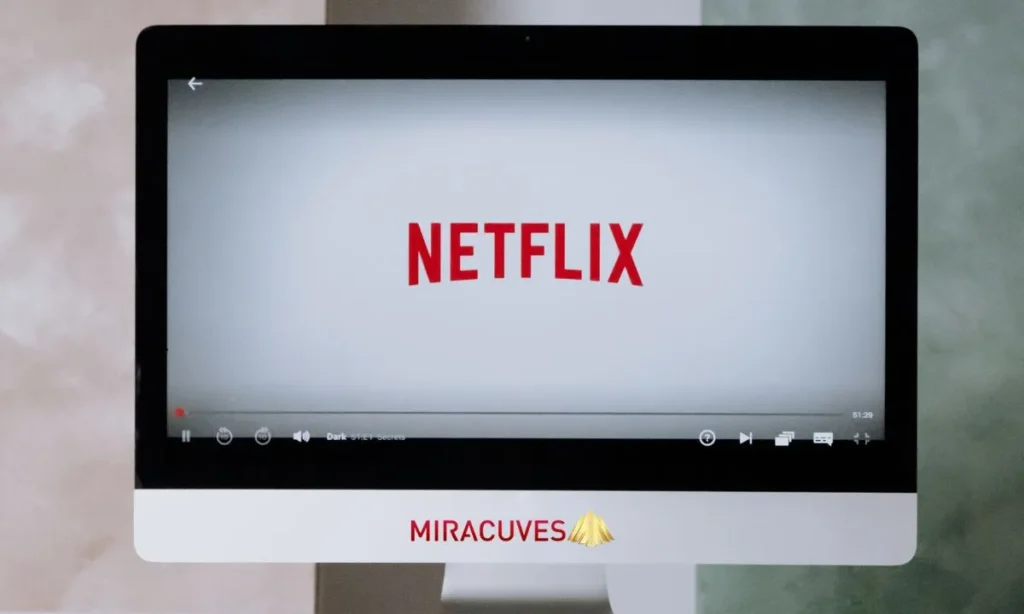In today’s fast-paced world, convenience is king, and grocery delivery apps like BigBasket have revolutionized how people shop for essentials. With the increasing demand for online grocery platforms and on-demand Grocery Delivery App Development, businesses now have an incredible opportunity to tap into this thriving market. BigBasket, a leader in the industry, has set a high standard by offering a seamless shopping experience, real-time delivery tracking, and a vast selection of groceries at customers’ fingertips.
If you’re looking to create a grocery delivery app like BigBasket, understanding the key features, development process, and cost factors is essential. Building an app that meets customer expectations can position your business as a strong BigBasket competitor. This guide will walk you through the essential steps, from conceptualizing your app to its development, launch, and growth potential, while highlighting how efficient solutions can streamline the process.
What is BigBasket?
BigBasket is one of India’s largest online grocery platforms, providing a wide range of fresh produce, packaged foods, household items, and more to millions of customers. It operates as an on-demand grocery service, allowing users to order groceries from their smartphones and have them delivered to their doorstep. The app’s convenience, reliability, and vast inventory have made it a household name in the Indian market.
BigBasket’s business model revolves around partnering with local grocery stores, warehouses, and suppliers to ensure timely delivery and stock availability. It offers users flexible delivery slots, real-time tracking, and multiple payment options, enhancing customer convenience. Additionally, BigBasket integrates personalized recommendations and subscription-based services to keep customers coming back, building long-term loyalty.
What sets BigBasket apart is its user-friendly interface, a large catalog of products, and an efficient logistics network that ensures deliveries in as little as a few hours. As a grocery delivery service, it meets the needs of today’s busy consumers who want fast, convenient, and hassle-free shopping experiences without leaving their homes.
BigBasket’s core features with the features you would need to implement in your own grocery delivery app:
| Feature | BigBasket | Your Grocery App |
|---|---|---|
| Product Catalog | Wide variety of groceries, fresh produce, and household items. | Customizable product offerings based on local market demand. |
| User Interface (UI/UX) | Simple, user-friendly design with easy navigation. | Focus on intuitive design with advanced filtering and sorting. |
| Delivery Options | Multiple delivery slots with express delivery. | Flexible delivery schedules, including same-day and next-hour delivery. |
| Real-Time Order Tracking | Customers can track orders in real-time. | Integrate GPS tracking for live updates on delivery status. |
| Payment Methods | Multiple payment options: credit cards, UPI, COD. | Offer digital wallets, cryptocurrency options, or loyalty points. |
| Customer Support | 24/7 customer service via chat and phone. | Offer AI-based chatbots along with customer service for quick issue resolution. |
| Subscription Services | Subscription-based orders for frequent items. | Introduce customizable subscription plans for recurring deliveries. |
| Personalized Recommendations | AI-driven product recommendations. | Enhanced recommendations with AI and machine learning for higher personalization. |
| Partner Integration | Local stores and vendors as supply partners. | Include partnerships with local stores, organic suppliers, or niche markets. |
| Offers and Discounts | Regular promotions and discounts. | Unique discount features like group-buying or referral discounts. |
Why Should You Build This App?
Building a grocery delivery app like BigBasket presents a huge business opportunity in today’s digital-first world. With an increasing number of consumers opting for the convenience of online shopping, the demand for on-demand grocery services has skyrocketed. People want to avoid the hassle of in-store grocery shopping, and apps like BigBasket offer them the ease of browsing, ordering, and receiving groceries at home with just a few clicks.
From a business perspective, the online grocery market is booming. It’s projected to grow exponentially in the coming years, driven by urbanization, busy lifestyles, and consumers’ growing preference for contactless shopping. By creating a BigBasket competitor, you can tap into this rising demand and establish your presence in the online grocery space.
Additionally, launching your own grocery delivery platform allows you to build a direct relationship with customers, giving you valuable insights into their shopping behaviors. This data can be leveraged to optimize your offerings, deliver personalized experiences, and increase customer loyalty.
Most importantly, starting a grocery app positions your business as a modern solution provider, opening doors to potential partnerships with local stores, suppliers, and delivery drivers. With the right execution, you could quickly become a key player in the grocery delivery market.
A Table or Chart showing the growth of the online grocery market can be added here to emphasize the business opportunity, backed by data. For example:
| Year | Global Online Grocery Market Size (in billion USD) | Growth Rate |
|---|---|---|
| 2022 | 285 | 10% |
| 2023 | 314 | 10.2% |
| 2024 | 347 | 10.5% |
| 2025 | 384 | 11% |
How to Differentiate Your App from Others
In a competitive market where apps like BigBasket dominate, standing out is essential for success. Simply building another grocery delivery app won’t cut it. You’ll need to focus on creating a unique value proposition (UVP) that makes your app distinct and appealing to users.
One way to differentiate is by offering hyper-local services. While BigBasket covers large areas, your app can focus on a more personalized, community-based approach. Partnering with local farmers, organic grocers, and small businesses allows you to promote fresh, local produce, which appeals to health-conscious consumers. Highlighting sustainability and supporting local businesses can also attract a loyal customer base.
Another strategy is to improve the user experience. Offering faster delivery options, such as 30-minute deliveries or real-time updates, can give you an edge over competitors. Additionally, integrating AI-powered shopping assistants that help users find the best deals or automatically reorder frequent items can enhance convenience.
Consider adding unique features like flexible delivery subscription models, where users can schedule regular deliveries at discounted rates. Or, introduce a group-buying feature that allows users to team up with neighbors for bulk orders and savings.
Ultimately, the goal is to create an app that addresses specific pain points, such as faster delivery, better customer service, or healthier product choices, which sets you apart from existing players like BigBasket.
| Feature | BigBasket | Your App |
|---|---|---|
| Delivery Time | Scheduled same-day delivery | 30-minute express delivery |
| Product Selection | Wide variety of grocery items | Focus on local, organic, and niche products |
| User Assistance | AI-powered recommendations | AI-based shopping assistants for personalized deals |
| Subscription Models | Basic subscription for essentials | Flexible, customizable subscription options |
| Group-Buying | Not available | Allows users to group orders for discounts |
Market Size and Industry Growth
The online grocery delivery market has seen explosive growth in recent years, and it’s expected to continue expanding at a rapid pace. According to recent industry reports, the global online grocery market was valued at over $285 billion in 2022 and is projected to reach nearly $500 billion by 2028, growing at a compound annual growth rate (CAGR) of around 10-12%.
Several factors are driving this growth. First, there’s a significant shift in consumer behavior towards e-commerce and contactless services, especially in the wake of the global pandemic. People increasingly prefer to shop for groceries from the comfort of their homes. This trend is further boosted by the convenience of on-demand grocery services that provide flexible delivery times, a wide product range, and competitive pricing.
Additionally, urbanization and the rise of dual-income households have fueled demand for time-saving services like grocery delivery. Consumers are willing to pay a premium for faster, more convenient services that fit into their busy lives.
Geographically, markets like North America, Europe, and Asia-Pacific are the key players in this space, with India and China experiencing particularly high growth due to their large populations and rapidly increasing internet penetration.
Building a grocery delivery app now positions you to capture a significant share of this booming market, especially if you focus on delivering unique value and catering to the needs of modern consumers.
| Year | Global Online Grocery Market Size (in billion USD) | CAGR (%) |
|---|---|---|
| 2022 | 285 | 10% |
| 2023 | 314 | 10.2% |
| 2024 | 347 | 10.5% |
| 2025 | 384 | 11% |
| 2026 | 426 | 11.2% |
| 2027 | 475 | 11.5% |
| 2028 | 500 | 12% |
Excited to launch a BigBasket-style grocery app?
We’ll craft a smart, feature-rich platform with automated orders,
multiple payment choices, and real-time delivery tracking.
Ready to launch?
Key Features of BigBasket and Your Grocery Delivery App
When developing a grocery delivery app like BigBasket, it’s essential to focus on features that not only match industry standards but also elevate the user experience. BigBasket’s success lies in its seamless functionality and attention to customer convenience. Your app should include similar features, while also adding unique touches to stand out.
First and foremost, real-time inventory tracking is crucial. Users expect accurate stock information when placing orders, so having an integrated inventory management system with real-time updates is essential.
Another key feature is the user profile section. This allows users to save their preferences, view order history, and manage delivery addresses, ensuring a smooth and personalized shopping experience. Adding a wishlist function also gives users the option to save items for future purchases.
Delivery management is one of the most important aspects of a grocery app. Offering multiple delivery slots, same-day delivery, and real-time order tracking can enhance user satisfaction. Consider adding a delivery driver app to streamline communication between drivers and users, improving delivery efficiency.
To further boost engagement, incorporate AI-powered recommendations that suggest products based on previous purchases and preferences. Personalization is key to building long-term loyalty.
Finally, integrating multiple payment methods—from credit cards to digital wallets—ensures that customers have a variety of convenient ways to pay.
| Feature | BigBasket | Your App |
|---|---|---|
| Real-Time Inventory Tracking | Yes | Yes, with advanced stock alert notifications |
| User Profiles | Yes | Yes, with wishlist and saved addresses |
| Delivery Management | Flexible slots and real-time tracking | Same-day delivery, driver app, live communication |
| Personalized Recommendations | AI-powered based on past purchases | AI and ML-based advanced recommendations |
| Payment Methods | Credit, debit, UPI, wallets | Credit, debit, wallets, and cryptocurrency |
Technical Requirements
Building a grocery delivery app like BigBasket requires a robust technical foundation to handle high traffic, real-time data processing, and seamless customer interactions. Choosing the right tech stack is essential for ensuring your app is scalable, secure, and efficient.
For the frontend, technologies like React Native or Flutter are ideal for building cross-platform apps, allowing your app to function smoothly on both iOS and Android. These frameworks ensure a fast and responsive user interface, providing users with a seamless experience, regardless of the device they’re using.
On the backend, you need a technology that can handle large amounts of data and real-time processing. Node.js or Django (Python) are excellent choices for backend frameworks, known for their scalability and efficiency. Pair these with a robust database like MongoDB (NoSQL) or PostgreSQL (SQL) for managing customer data, inventory, and transactions.
To enhance security, implement SSL encryption, secure payment gateways, and data protection protocols (GDPR compliance), ensuring that sensitive information such as payment details and personal data are kept safe.
Integrating with third-party APIs is crucial for features like GPS tracking (Google Maps API), real-time notifications (Firebase), and payment processing (Stripe, PayPal).
By carefully selecting your tech stack, you can ensure that your app remains scalable, secure, and capable of handling complex tasks like real-time updates and large user traffic.
| Component | Recommended Technologies |
|---|---|
| Frontend | React Native, Flutter |
| Backend | Node.js, Django (Python) |
| Database | MongoDB (NoSQL), PostgreSQL (SQL) |
| Real-Time Updates | Firebase, WebSockets |
| GPS & Maps | Google Maps API, Mapbox |
| Payment Processing | Stripe, PayPal, Razorpay |
| Security | SSL encryption, OAuth, GDPR compliance protocols |
Design and User Interface (UI/UX)
A well-designed user interface (UI) and seamless user experience (UX) are crucial to the success of any grocery delivery app. In a highly competitive space, customers expect apps that are easy to navigate, visually appealing, and quick to respond. The design of your app can make or break user retention.
To build an app like BigBasket, focus on creating a clean and intuitive interface. Start with a simple and clear home screen that offers easy access to product categories, popular items, and promotions. Ensuring that users can quickly find what they are looking for is key to increasing order volumes. A smart search bar with filters for price, availability, and brand can help users efficiently navigate through thousands of products.
Another essential design feature is quick checkout. Streamline the checkout process by allowing users to save payment details and delivery addresses for future orders. You can also integrate a one-tap checkout option to reduce cart abandonment.
Mobile responsiveness is also a must. Your app should load quickly, with no lag, on both iOS and Android devices. Ensuring smooth transitions between pages, with minimal loading times, is critical for delivering a top-notch user experience.
Finally, ensure that your design incorporates personalized touches. For example, display recommended products based on user preferences or order history to engage users and encourage repeat purchases.
| UI/UX Quality | Retention Rate (%) | Conversion Rate (%) |
|---|---|---|
| Excellent | 75% | 40% |
| Average | 50% | 25% |
| Poor | 20% | 10% |
Minimum Viable Product (MVP)
Launching a Minimum Viable Product (MVP) is a smart and cost-effective strategy when building a grocery delivery app like BigBasket. An MVP allows you to introduce a simplified version of your app with only the essential features, helping you test the waters and gather valuable user feedback before fully developing the platform.
The core idea behind an MVP is to release a functional app quickly and affordably, enabling you to validate your business model with real users. For a grocery delivery app, your MVP should include the most critical features such as product catalog, user registration, cart management, basic payment options, and delivery tracking. These features are enough to allow customers to place orders, while giving you insight into user behavior, preferences, and potential pain points.
Another key benefit of starting with an MVP is faster time-to-market. Instead of spending months developing every feature, you can launch your app in a matter of weeks and start attracting users. As your user base grows, you can iterate on the feedback received and gradually introduce more complex features like AI-based product recommendations, personalized offers, or group-buying options.
Additionally, building an MVP allows you to control costs. By focusing on core functionality, you reduce initial development expenses while still positioning yourself to scale as demand grows.
| Development Stage | Full App Development | MVP Development |
|---|---|---|
| Cost | $50,000+ | $15,000 – $20,000 |
| Timeframe | 6-9 months | 8-12 weeks |
| Features Included | Full feature set | Core essential features |
This table shows how an MVP can drastically reduce both development time and costs while enabling early entry into the market.
Development Process
The development process for a grocery delivery app like BigBasket involves several stages, from conceptualization to launch. Following a structured approach ensures your app is built efficiently, with minimal delays and maximum functionality.
The first stage is prototyping and wireframing. During this phase, designers and developers create mockups of your app’s interface to ensure that all essential elements, such as the product catalog, search bar, and checkout, are laid out intuitively. This step helps in visualizing the user journey and refining the design before moving into development.
Next comes the backend and frontend development. The backend, often built with technologies like Node.js or Python (Django), handles data processing, inventory management, and user data storage. The frontend, built using frameworks like React Native or Flutter, focuses on the user interface—ensuring that your app is responsive, visually appealing, and easy to use across different devices.
API integrations are another critical part of the process. Your app will need to connect to third-party services for payment gateways (such as Stripe or PayPal), GPS for delivery tracking (like Google Maps API), and real-time notifications.
After development, testing is essential. Rigorous quality assurance (QA) tests will help identify bugs and ensure that all features function smoothly. Functional, usability, and security tests will ensure your app is ready for launch.
| Development Stage | From Scratch (Months) | With Pre-Designed Templates (Weeks) |
|---|---|---|
| Prototyping & Design | 1.5 | 2 |
| Backend & Frontend Development | 3-4 | 6 |
| API Integration | 1 | 2 |
| Testing & QA | 1 | 1 |
| Total Time | 6-7 months | 10-12 weeks |
This chart illustrates how using pre-designed templates can significantly reduce the overall development time.
Cost Estimation and Timeframe
The cost and timeframe for developing a grocery delivery app like BigBasket can vary significantly depending on the features, technology stack, and development approach you choose. Globally, the cost to build a comprehensive grocery app from scratch ranges between $50,000 and $150,000, depending on the complexity and region. However, there are ways to optimize your budget and time, especially by using pre-designed templates or ready-made solutions.
For instance, a full-featured app with advanced functionalities like real-time delivery tracking, AI-based recommendations, and multiple payment gateways will fall on the higher end of the spectrum. On the other hand, starting with a Minimum Viable Product (MVP) with basic features can reduce the cost to around $15,000 – $20,000, offering a more affordable entry point to the market.
When it comes to the timeframe, building an app from scratch could take anywhere from 6 to 9 months, depending on the team size and project scope. Opting for pre-built solutions or customizable templates can reduce development time to 10-12 weeks, getting your app to market much faster.
To maximize your return on investment, you’ll need to balance feature richness with cost-effectiveness, ensuring that your app includes the essentials while allowing room for future upgrades based on user feedback and market demand.
| Development Approach | Cost | Timeframe |
|---|---|---|
| From Scratch | $50,000 – $150,000 | 6-9 months |
| MVP with Basic Features | $15,000 – $20,000 | 8-12 weeks |
| Pre-Designed Templates | $10,000 – $15,000 | 10-12 weeks |
This chart visually highlights the time and cost benefits of using templates versus building from scratch.
Monetization Strategies
When developing a grocery delivery app like BigBasket, choosing the right monetization strategies is crucial to ensure long-term profitability. BigBasket employs a variety of revenue models that you can also incorporate into your own app to generate consistent income.
One of the most common models is the commission-based approach. In this model, your app acts as a marketplace connecting grocery stores and customers, and you take a percentage of each transaction made through the platform. This strategy works well if you’re partnering with multiple grocery stores or suppliers, as it incentivizes them to use your platform.
Another lucrative model is the subscription service. Offering users a subscription plan, like BigBasket’s BB Star Membership, allows them to pay a monthly or yearly fee in exchange for benefits such as free deliveries, priority slots, and special discounts. This not only brings in a steady stream of income but also encourages customer loyalty and retention.
Delivery fees are another straightforward revenue generator. By charging customers a small fee for each delivery, especially for fast or same-day deliveries, you can cover operational costs while earning extra profit.
Finally, you can consider offering advertisement space to local grocery stores or brands who want to promote their products within your app. Displaying targeted ads based on user behavior or popular items can generate additional revenue without compromising the user experience.
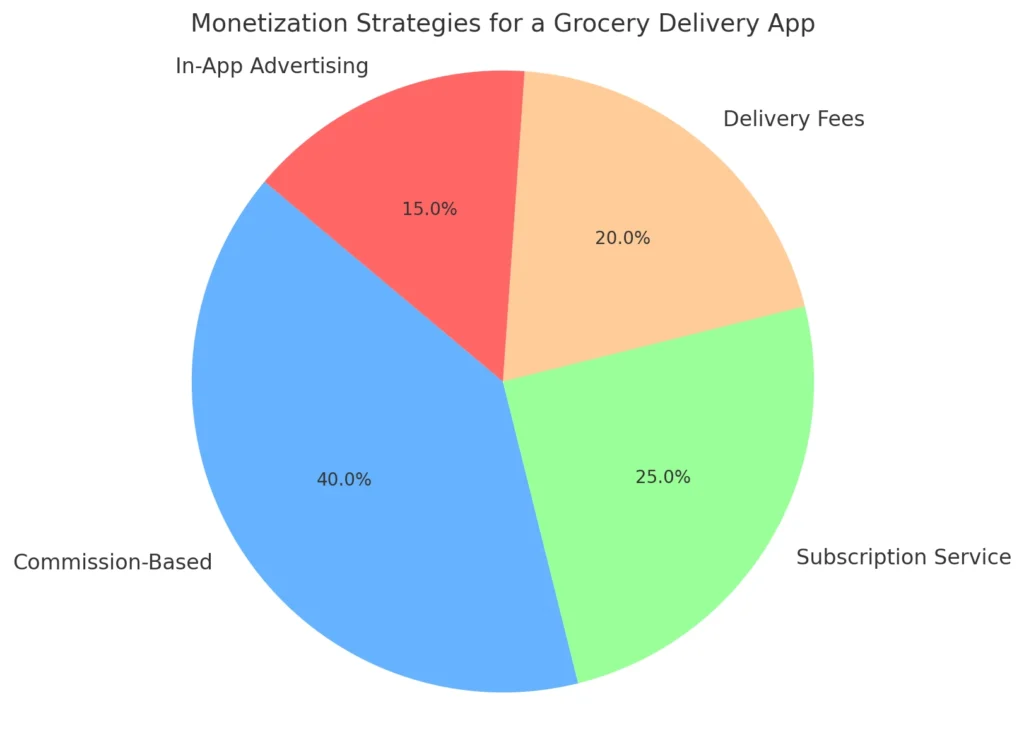
Launching and Marketing the App
Launching your grocery delivery app is just the beginning. To ensure its success in a competitive market, you need a well-planned marketing strategy that reaches your target audience and drives app downloads from day one.
Before launch, consider building anticipation with a pre-launch marketing campaign. Create buzz by offering exclusive early access or discounts to users who sign up before the official launch. Use social media, influencer marketing, and email campaigns to generate excitement and build an initial user base.
On launch day, ensure your app is fully optimized for both the App Store and Google Play. This includes using App Store Optimization (ASO) techniques such as keyword-rich descriptions, engaging screenshots, and a compelling app video. The goal is to make your app easily discoverable by users searching for grocery delivery solutions.
Once live, focus on post-launch marketing strategies. Invest in paid advertising through platforms like Google Ads and Facebook to target users interested in online grocery services. Additionally, encourage early adopters to leave positive reviews, as app ratings heavily influence download decisions.
To retain users, consider implementing push notifications that alert customers to new deals, restocked items, or special discounts. Additionally, offering referral bonuses for customers who recommend your app to others can significantly increase organic growth.
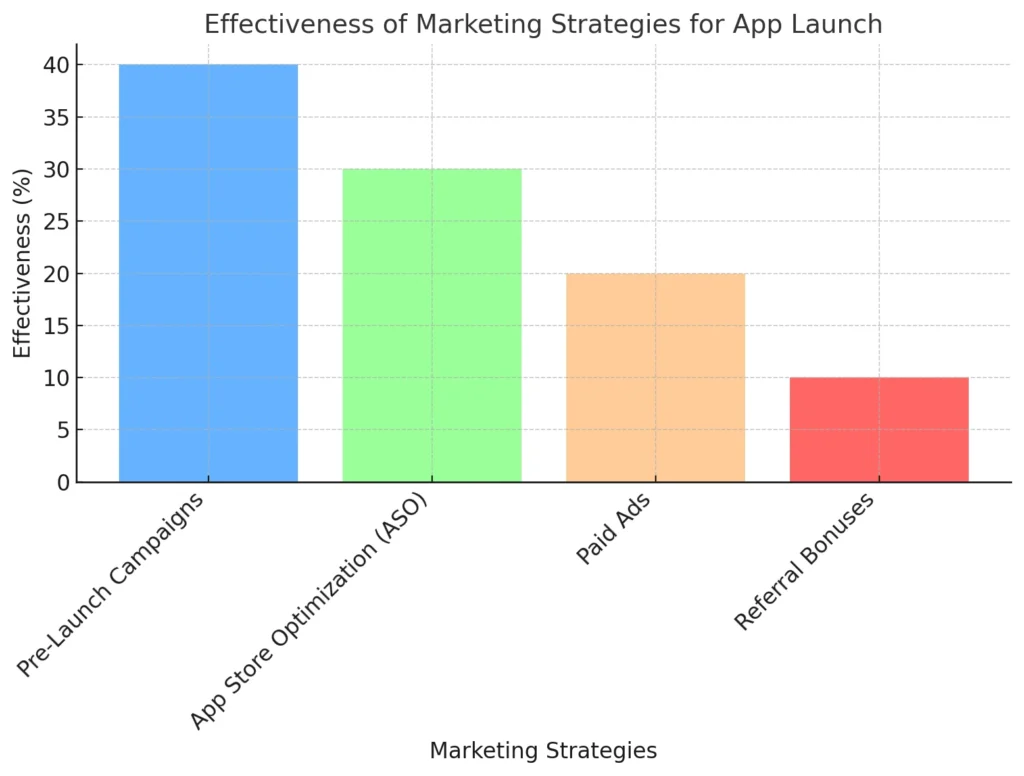
Why Trust Miracuves Solutions for Your Next Project?
When building a grocery delivery app like BigBasket, partnering with a trusted development company can make all the difference. Miracuves Solutions stands out as a leader in app development, offering cost-effective, scalable solutions tailored to your business needs.
What sets Miracuves Solutions apart is its expertise in providing ready-made designs and customized app development services. This ensures that you can launch your app quickly—sometimes in as little as 10 weeks—while saving up to 90% in development costs compared to traditional methods. Their deep understanding of the grocery delivery industry allows them to deliver apps like Instacart Business Model, that are not only functional but also equipped with the latest technologies, such as AI-powered recommendations, real-time tracking, and seamless payment gateways.
Additionally, Miracuves Solutions ensures that your app is designed for scalability. As your business grows, your app can easily be enhanced with new features, ensuring it remains competitive in an evolving market. They also offer comprehensive post-launch support, ensuring that your app remains functional, secure, and updated with the latest features and patches.
Moreover, with a proven track record of successful app launches across multiple industries, Miracuves Solutions guarantees a smooth, hassle-free development experience. Whether you’re starting with a Minimum Viable Product (MVP) or planning a full-scale grocery app, you can trust Miracuves Solutions to deliver a top-quality product that meets your goals.
| Aspect | Traditional Development | Miracuves Solutions |
|---|---|---|
| Development Timeframe | 6-9 months | 10-12 weeks |
| Development Cost | $50,000 – $150,000 | 10% of global costs |
| Scalability | Limited flexibility | Highly scalable with future upgrades |
| Post-Launch Support | Requires additional contracts | Included as part of the service |
Legal and Regulatory Considerations
When developing and launching a grocery delivery app, understanding the legal and regulatory requirements is crucial to ensure your business operates smoothly and in compliance with local laws. Ignoring these aspects can lead to hefty fines, customer trust issues, or even operational shutdowns.
One of the first legal requirements is data privacy compliance. With personal information, payment details, and delivery addresses being stored and processed, your app must comply with regulations like GDPR (General Data Protection Regulation) in Europe or CCPA (California Consumer Privacy Act) in the U.S. This means ensuring that your app includes clear data protection policies, user consent for data collection, and secure storage methods, such as encryption and anonymization techniques.
Payment gateway integration is another area that requires close attention. Whether using third-party services like Stripe or PayPal, you must ensure PCI DSS (Payment Card Industry Data Security Standard) compliance to securely handle payment transactions and protect sensitive cardholder data.
For apps that partner with local grocery stores or individual delivery drivers, creating legal contracts is essential. These contracts should cover service terms, commission structures, and liability issues in case of disputes or delivery issues.
Finally, ensure your app complies with any industry-specific regulations, such as health and safety standards for handling perishable goods in your region.
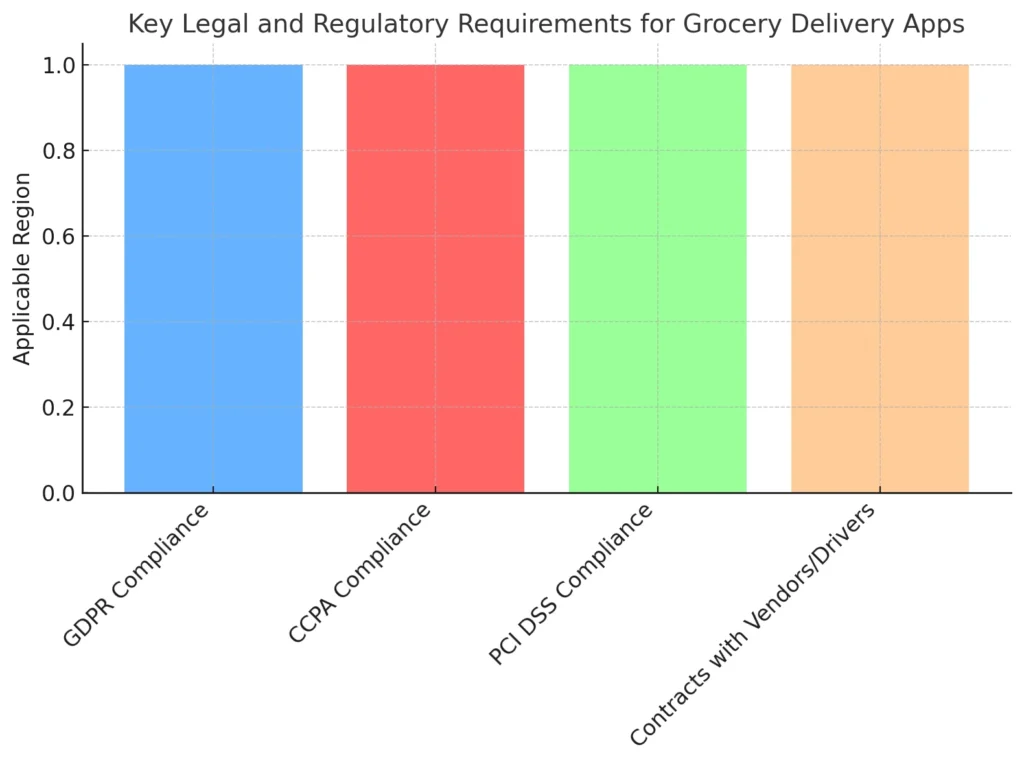
Conclusion
In conclusion, building a grocery delivery app like BigBasket offers a lucrative opportunity in today’s fast-evolving digital landscape. With the online grocery market growing rapidly, developing a well-designed, user-friendly app can place your business at the forefront of this booming industry. By focusing on essential features such as real-time delivery tracking, personalized recommendations, and multiple payment options, your app can offer a seamless experience to users.
Additionally, working with a trusted partner like Miracuves Solutions ensures that your app is built efficiently, with reduced costs and faster time-to-market. Their expertise in delivering scalable, feature-rich apps allows you to enter the market quickly, capitalize on current trends, and adapt as new technologies emerge.
Whether you’re launching a full-scale platform or starting with a Minimum Viable Product (MVP), developing a grocery delivery app will enable you to tap into a growing customer base and meet the rising demand for convenient, on-demand services.
Ready to launch your grocery delivery app?
Start Your Grocery Delivery App Today ! We’ll help you build a seamless, user-friendly platform that boosts customer satisfaction.
FAQs
How much does it cost to build a grocery delivery app like BigBasket?
The cost of developing a grocery delivery app can range from $15,000 to $150,000, depending on features, platform, and customization. Starting with an MVP is a cost-effective approach, while full-featured apps with advanced integrations will incur higher costs.
What is the typical timeframe for developing a grocery app?
The development timeframe for a grocery delivery app can vary. From scratch, it can take 6 to 9 months, while using pre-built templates or an MVP approach can reduce it to 10-12 weeks, allowing for quicker market entry.
Can I customize the design of my grocery delivery app?
Yes, most development solutions, including Miracuves Solutions, offer customizable templates. You can tailor the app’s design, features, and functionalities to meet your brand’s unique requirements, ensuring a personalized and standout user experience.
What features should I include in my grocery app MVP?
Your MVP should include essential features such as product catalog, user registration, cart management, payment integration, and delivery tracking. These core features allow users to shop and place orders while providing valuable insights for future feature additions.
Does Miracuves Solutions offer post-launch support?
Yes, Miracuves Solutions provides comprehensive post-launch support, including app maintenance, updates, and feature enhancements. They ensure that your app remains secure, functional, and up-to-date with the latest technology trends.
Check out the top-rated grocery delivery solution offered by Miracuves – built for performance and scale:
- Zepto Clone Solution – The platform enables users to browse products, place orders, make instant payments, and track deliveries in real time—offering a seamless and lightning-fast shopping experience.
- Deliveroo Clone Solution – The platform allows users to browse menus, place orders, pay securely, and track deliveries in real time.
- Dunzo Clone Solution – A hyperlocal delivery and task fulfillment platform where users can get groceries, medicines, packages, or essentials delivered quickly from nearby stores.
- Talabat Clone Solution – Inspired by Talabat, this app allows users to browse menus, place orders, pay securely, and track deliveries in real time, all through a user-friendly mobile and web interface.



